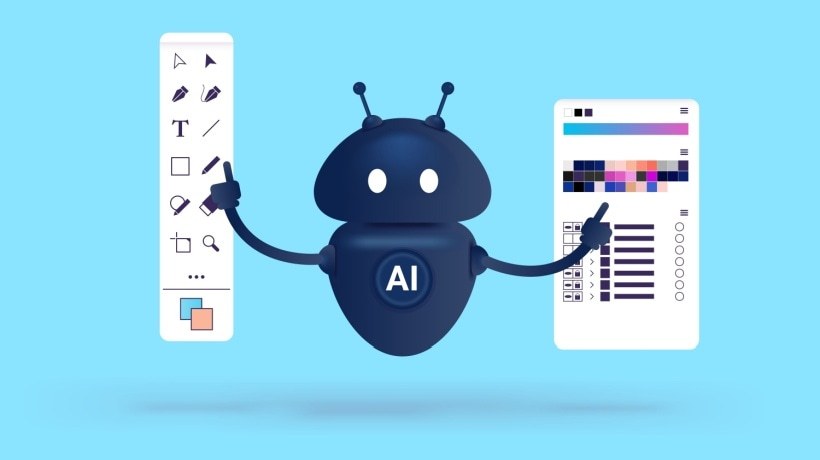Tell Your Visual Story With 5 Design Elements
Everyone has a story to tell. I still recall the stories my dad used to tell us when I was a small kid, around the fireplace on a rainy day. It wasn't only about the words—it was more about the visuals I built in my brain/memory. They made the story more exciting and eternally rememberable. Can you relate?
Think of the following 5 elements when designing microlearning content with a visual storytelling purpose:
- Content and typography
- Pairing colors
- Iconography
- Data visualization
- Using the right image
1. Communicate Your Content And Typography
To communicate is to share or exchange information, news, or ideas. The core of communication lies in the message or story you're passing on to your audience. Following are some tips:
- Articulate a clear purpose for your message upfront by answering these three questions
What is it about? Who is it for? Why is it important? - Use a storytelling outline to keep your audience engaged
For example, start your flow with the why, followed by the intended goal, then explain the plan in detail, ending with the recap by including a summary. - Capture and sustain the attention of your audience with a strong opening
For example, an intriguing headline, attention-grabbing first line, quote, or thought-provoking essential question. - Structure your content into short, digestible topics
Offer "bite-sized" pieces of information. - Bring your content to life
Make it relatable and memorable by using humor if/where appropriate to boost mood and embedding little "aha" moments to activate interest.
Understanding typefaces (also known as fonts) gives personality to your content. Select the right font to amplify the meaning of your message, convey your feelings, and best represent your message and intention.
Fonts are categorized based on many types and classifications, like serif fonts (these have a pointy extension at the end of the strokes), sans serif fonts (these fonts are without the pointy extension detail at the end of the strokes), and fancy fonts (including fonts that resemble handwriting, scripts, or decorative fonts). Here are some tips for choosing fonts for your visuals:
- Always go for your branding fonts that best describe your brand personality
- Approach your target audience and stakeholders for their format preferences
To create a dynamic and contrasting experience, don’t pair more than two different fonts. Explore a font generator like fontjoy.com to help you kickstart your font exploration.
2. Pass On Your Message With Well-Paired Colors
Have you ever wondered why most of the brands in the fast-food industry use warm tones (like red, orange, and yellow) as their primary colors instead of cool tones (like grey, blue, or green)? It's because all those three warm colors stimulate your appetite, while cool tones don't.
Color psychology is the study of how colors influence human behavior. Using specific colors can stimulate your senses. For example, you could use colors to convince or create urgency, help pass meaning and intentions, build brand awareness through consistency, and help focus and prioritize the information. To make a well-contrasting color scheme, check out color generator tools like Coolors.co or Khroma. co.
3. Examine Iconography
Why do we use icons to visualize our message? The human brain is programmed for visual patterns instead of text. So when you use icons to express your message, you deliver a faster way of absorbing information and a higher chance of retaining it for longer. Below are some tips:
- Brainstorm the keywords when you're sourcing for icons
- Diversify by asking yourself, does this icon best mirror the community and culture? Is it current, inclusive, and gender-neutral?
- Use icons with similar styles and colors to stay consistent and professional-looking in your visual
4. Visualize Your Data
Use charts and diagrams to visualize your data. For example, use a line chart, area chart, or bar chart when showing changing time trends. Use both vertical and horizontal bar charts when you're telling a story about an ordered ranking. Use a pyramid chart when you're describing a hierarchical structure, as well as quantity or size. Use maps when illustrating a spatial or geographical distribution of data. Last and probably the most commonly used, use a pie chart, donut chart, icon matrix, or stacked bar chart when you're describing distribution.
5. Use The Right Image
Below are six simple tips to ensure that you're using the right image in the right place:
- Brainstorm your keywords to find relevant images representing one idea
- Search for the best image considering different cognitive and cultural perspectives
- Leave plenty of white space
- Find the best angle that fits your visual
- Be mindful of copyright when choosing images
- Avoid choosing clipart for images selected to add to the context or purpose of the message
Conclusion
In summary, we use visual storytelling to convince and attract our audience, increase information retention, prolong audience attention span, and convey a clear message and call-to-action. Feel free to use visual storytelling tools such as infographics, story cards, videos, articles, or VR and AR.








